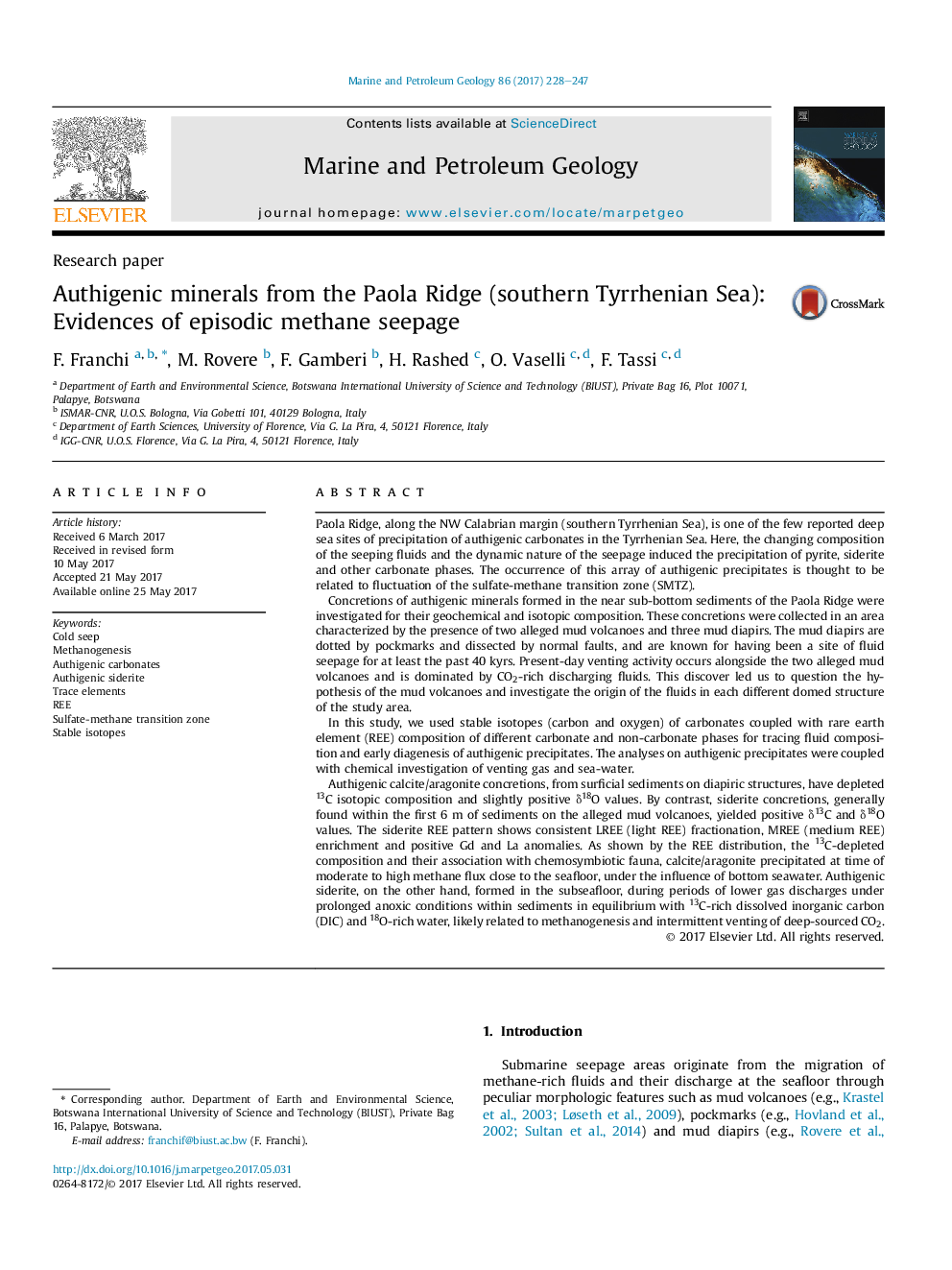| کد مقاله | کد نشریه | سال انتشار | مقاله انگلیسی | نسخه تمام متن |
|---|---|---|---|---|
| 5781974 | 1637141 | 2017 | 20 صفحه PDF | دانلود رایگان |

- We investigated geochemical composition of authigenic minerals from Paola Ridge.
- We present chemical composition of bottom seawater and venting gases.
- Variation in seepage activity induces formation of different authigenic minerals.
- Calcite/aragonite concretions precipitates during moderate to high methane flux.
- Siderite forms during low methane flux below the sulfate-methane transition zone.
Paola Ridge, along the NW Calabrian margin (southern Tyrrhenian Sea), is one of the few reported deep sea sites of precipitation of authigenic carbonates in the Tyrrhenian Sea. Here, the changing composition of the seeping fluids and the dynamic nature of the seepage induced the precipitation of pyrite, siderite and other carbonate phases. The occurrence of this array of authigenic precipitates is thought to be related to fluctuation of the sulfate-methane transition zone (SMTZ).Concretions of authigenic minerals formed in the near sub-bottom sediments of the Paola Ridge were investigated for their geochemical and isotopic composition. These concretions were collected in an area characterized by the presence of two alleged mud volcanoes and three mud diapirs. The mud diapirs are dotted by pockmarks and dissected by normal faults, and are known for having been a site of fluid seepage for at least the past 40 kyrs. Present-day venting activity occurs alongside the two alleged mud volcanoes and is dominated by CO2-rich discharging fluids. This discover led us to question the hypothesis of the mud volcanoes and investigate the origin of the fluids in each different domed structure of the study area.In this study, we used stable isotopes (carbon and oxygen) of carbonates coupled with rare earth element (REE) composition of different carbonate and non-carbonate phases for tracing fluid composition and early diagenesis of authigenic precipitates. The analyses on authigenic precipitates were coupled with chemical investigation of venting gas and sea-water.Authigenic calcite/aragonite concretions, from surficial sediments on diapiric structures, have depleted 13C isotopic composition and slightly positive δ18O values. By contrast, siderite concretions, generally found within the first 6 m of sediments on the alleged mud volcanoes, yielded positive δ13C and δ18O values. The siderite REE pattern shows consistent LREE (light REE) fractionation, MREE (medium REE) enrichment and positive Gd and La anomalies. As shown by the REE distribution, the 13C-depleted composition and their association with chemosymbiotic fauna, calcite/aragonite precipitated at time of moderate to high methane flux close to the seafloor, under the influence of bottom seawater. Authigenic siderite, on the other hand, formed in the subseafloor, during periods of lower gas discharges under prolonged anoxic conditions within sediments in equilibrium with 13C-rich dissolved inorganic carbon (DIC) and 18O-rich water, likely related to methanogenesis and intermittent venting of deep-sourced CO2.
Journal: Marine and Petroleum Geology - Volume 86, September 2017, Pages 228-247